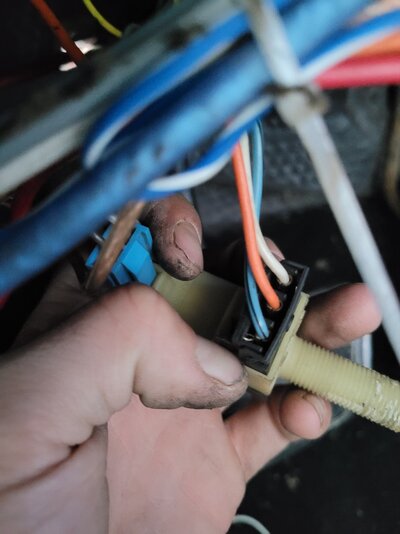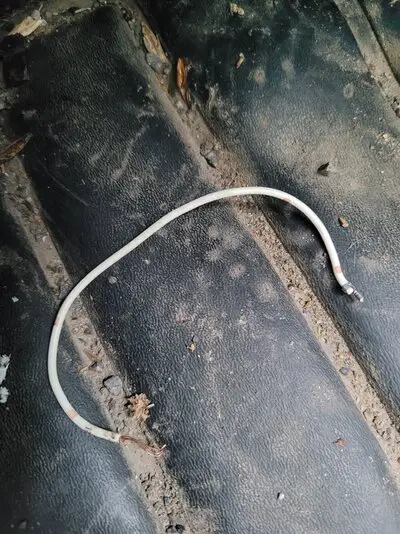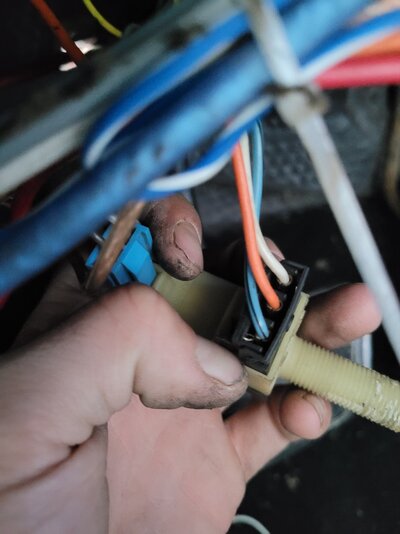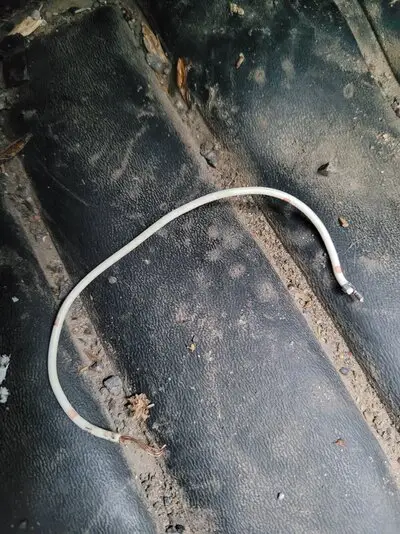Hi my problem is when i press the brake my rear tail light dont work my flasher work great when i have light on my rear light work but my brake not I have a white wire from my brake switch that has fallen off and I don't know where to put it back
CUTLASS Tail light problem
- Thread starter tiwii666
- Start date
You are using an out of date browser. It may not display this or other websites correctly.
You should upgrade or use an alternative browser.
You should upgrade or use an alternative browser.
Model, year? Sorry, most of y'all pretty much suck at making your first posts as nebulous "my car doesn't work, what's wrong?" YOU know your car. We don't. How would it appear if the answer you got was "Well, get out in the garage and fix it." as a solution? See my point? Hate to sound like an Auto Zone parts jockey, but it does help to know what you're working on with some basic info. If you don't like hearing the truth, then step away from the tool box and GTFO of the garage.
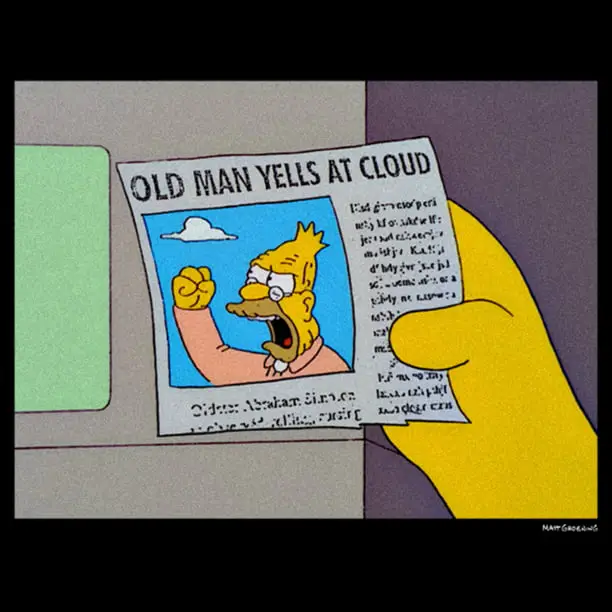
I keep saying I'm going to quit answering anymore nebulous questions, but yet I do anyway. You did offer up when they worked and at least looked under the column to see a wire hanging loose, so some research has been done. This is helpful.
Sometimes wiring routings and colors will change between the years and applications. This is why we need more detailed information.
You mention tail lamps and flashers work. Do your turn signals work? If they do, then all your issues reside in that white wire. Find out where it goes at the brake switch and re-connect it and you're golden. It may have broken off at the terminal in the plug.
On a typical G-body, there's at least two wires to your brake lamp stop switch under the dash. There's an orange wire (I think it's orange, could be wrong) coming from the power to the switch. There's a white wire goes from the switch back to the turn signal switch wiring harness. When the brake pedal is pressed, it allows the center pin to slide outward from the "threaded" end. This basically bypasses everything to turn on the stop lamps regardless if the tail lights are on or not. This is a normally open (NO) switch. The NO switch portion is the part closest to the threaded end. In reality it doesn't matter which wire goes on which terminal. Orange/white or white/orange. IIRC, aren't the wires installed in a plug anyway?
There may be a pink and purple wire plug on the far end of the switch if you have a lockup converter. This is the normally closed (NC) part of the switch. When you press the brake, it opens the switch to de-energize the torque converter lockup.
If end up needing a new switch...Cutlass models used the following:
1976-1981
p/n with cruise control - 25524847 (can use 25524845)
p/n without cruise control - 1216291
1982-1985
p/n with cruise control - 25524845 (can use 25524847)
p/n without cruise control - 25524848
1986-1988
p/n with cruise control - 25529860
p/n without cruise control - 25529861
Stole this pic from thirdgen.org (I believe 1986-88 use a slightly bit different wiring diagram because of the high mount third brake light needing a third brake lamp terminal, but I'm too lazy to look it up):
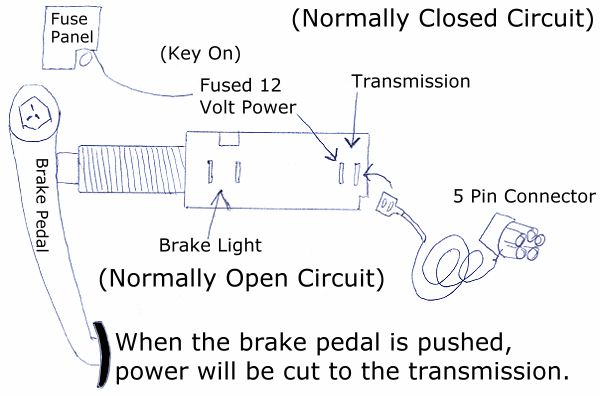

I keep saying I'm going to quit answering anymore nebulous questions, but yet I do anyway. You did offer up when they worked and at least looked under the column to see a wire hanging loose, so some research has been done. This is helpful.
Sometimes wiring routings and colors will change between the years and applications. This is why we need more detailed information.
You mention tail lamps and flashers work. Do your turn signals work? If they do, then all your issues reside in that white wire. Find out where it goes at the brake switch and re-connect it and you're golden. It may have broken off at the terminal in the plug.
On a typical G-body, there's at least two wires to your brake lamp stop switch under the dash. There's an orange wire (I think it's orange, could be wrong) coming from the power to the switch. There's a white wire goes from the switch back to the turn signal switch wiring harness. When the brake pedal is pressed, it allows the center pin to slide outward from the "threaded" end. This basically bypasses everything to turn on the stop lamps regardless if the tail lights are on or not. This is a normally open (NO) switch. The NO switch portion is the part closest to the threaded end. In reality it doesn't matter which wire goes on which terminal. Orange/white or white/orange. IIRC, aren't the wires installed in a plug anyway?
There may be a pink and purple wire plug on the far end of the switch if you have a lockup converter. This is the normally closed (NC) part of the switch. When you press the brake, it opens the switch to de-energize the torque converter lockup.
If end up needing a new switch...Cutlass models used the following:
1976-1981
p/n with cruise control - 25524847 (can use 25524845)
p/n without cruise control - 1216291
1982-1985
p/n with cruise control - 25524845 (can use 25524847)
p/n without cruise control - 25524848
1986-1988
p/n with cruise control - 25529860
p/n without cruise control - 25529861
Stole this pic from thirdgen.org (I believe 1986-88 use a slightly bit different wiring diagram because of the high mount third brake light needing a third brake lamp terminal, but I'm too lazy to look it up):

That'll be circuit 140, goes right to the hazard flasher. Then like you said the white, circuit 17, goes to the column. The exception is to those which have seperate rear turn signal s from the brake lights (exports, LeMans/Grand Am, early Centurys) that will still have a white wire but it'll be circuit 20 & goes to rear harness where the color will/should change to light blue in the intermediate harness.There's an orange wire (I think it's orange, could be wrong) coming from the power to the switch.
Que veux-tu dire par "le fil est tombé" ? Avez-vous une image?
Attachments
Cutlass supreme classic 1988Année modèle? Désolé, la plupart d'entre vous sont assez nuls pour rendre vos premiers messages aussi nébuleux "ma voiture ne fonctionne pas, qu'est-ce qui ne va pas?" VOUS connaissez votre voiture. Nous ne le faisons pas. À quoi cela ressemblerait-il si la réponse que vous obteniez était "Eh bien, sortez dans le garage et réparez-le." comme solution ? Voir mon point? Je déteste avoir l'air d'un jockey de pièces Auto Zone, mais cela aide de savoir sur quoi vous travaillez avec quelques informations de base. Si vous n'aimez pas entendre la vérité, éloignez-vous de la boîte à outils et du GTFO du garage.

Je n'arrête pas de dire que je vais arrêter de répondre à des questions plus nébuleuses, mais pourtant je le fais quand même. Vous avez offert quand ils ont travaillé et au moins regardé sous la colonne pour voir un fil qui pendait, donc des recherches ont été faites. C'est utile.
Parfois, les routages et les couleurs de câblage changent entre les années et les applications. C'est pourquoi nous avons besoin d'informations plus détaillées.
Vous mentionnez que les feux arrière et les clignotants fonctionnent. Vos clignotants fonctionnent-ils ? S'ils le font, alors tous vos problèmes résident dans ce fil blanc. Découvrez où il va au contacteur de frein et reconnectez-le et vous êtes en or. Il peut s'être cassé au niveau de la borne de la fiche.
Sur un G-body typique, il y a au moins deux fils vers votre interrupteur d'arrêt de feu stop sous le tableau de bord. Il y a un fil orange (je pense que c'est orange, c'est peut-être faux) venant de l'alimentation vers l'interrupteur. Il y a un fil blanc qui va de l'interrupteur au faisceau de câblage de l'interrupteur des clignotants. Lorsque la pédale de frein est enfoncée, elle permet à la goupille centrale de glisser vers l'extérieur à partir de l'extrémité « filetée ». Cela contourne essentiellement tout pour allumer les feux stop, que les feux arrière soient allumés ou non. Il s'agit d'un interrupteur normalement ouvert (NO). La partie de l'interrupteur NO est la partie la plus proche de l'extrémité filetée. En réalité, peu importe quel fil va sur quelle borne. Orange/blanc ou blanc/orange. IIRC, les fils ne sont-ils pas installés dans une prise de toute façon ?
Il peut y avoir une fiche de fil rose et violet à l'extrémité du commutateur si vous avez un convertisseur de verrouillage. Il s'agit de la partie normalement fermée (NC) de l'interrupteur. Lorsque vous appuyez sur le frein, il ouvre l'interrupteur pour désactiver le verrouillage du convertisseur de couple.
Si vous avez besoin d'un nouvel interrupteur... les modèles Cutlass utilisaient les éléments suivants :
1976-1981
p/n avec régulateur de vitesse - 25524847 (peut utiliser 25524845)
p/n sans régulateur de vitesse - 1216291
1982-1985
p/n avec régulateur de vitesse - 25524845 (peut utiliser 25524847)
p/n sans régulateur de vitesse - 25524848
1986-1988
p/n avec régulateur de vitesse - 25529860
p/n sans régulateur de vitesse - 25529861
A volé cette photo de thirdgen.org (je crois que 1986-88 utilise un schéma de câblage légèrement différent en raison du troisième feu stop à montage élevé nécessitant une troisième borne de feu stop, mais je suis trop paresseux pour le rechercher):

Attachments
Model, year? Sorry, most of y'all pretty much suck at making your first posts as nebulous "my car doesn't work, what's wrong?" YOU know your car. We don't. How would it appear if the answer you got was "Well, get out in the garage and fix it." as a solution? See my point? Hate to sound like an Auto Zone parts jockey, but it does help to know what you're working on with some basic info. If you don't like hearing the truth, then step away from the tool box and GTFO of the garage.

I keep saying I'm going to quit answering anymore nebulous questions, but yet I do anyway. You did offer up when they worked and at least looked under the column to see a wire hanging loose, so some research has been done. This is helpful.
Sometimes wiring routings and colors will change between the years and applications. This is why we need more detailed information.
You mention tail lamps and flashers work. Do your turn signals work? If they do, then all your issues reside in that white wire. Find out where it goes at the brake switch and re-connect it and you're golden. It may have broken off at the terminal in the plug.
On a typical G-body, there's at least two wires to your brake lamp stop switch under the dash. There's an orange wire (I think it's orange, could be wrong) coming from the power to the switch. There's a white wire goes from the switch back to the turn signal switch wiring harness. When the brake pedal is pressed, it allows the center pin to slide outward from the "threaded" end. This basically bypasses everything to turn on the stop lamps regardless if the tail lights are on or not. This is a normally open (NO) switch. The NO switch portion is the part closest to the threaded end. In reality it doesn't matter which wire goes on which terminal. Orange/white or white/orange. IIRC, aren't the wires installed in a plug anyway?
There may be a pink and purple wire plug on the far end of the switch if you have a lockup converter. This is the normally closed (NC) part of the switch. When you press the brake, it opens the switch to de-energize the torque converter lockup.
If end up needing a new switch...Cutlass models used the following:
1976-1981
p/n with cruise control - 25524847 (can use 25524845)
p/n without cruise control - 1216291
1982-1985
p/n with cruise control - 25524845 (can use 25524847)
p/n without cruise control - 25524848
1986-1988
p/n with cruise control - 25529860
p/n without cruise control - 25529861
Stole this pic from thirdgen.org (I believe 1986-88 use a slightly bit different wiring diagram because of the high mount third brake light needing a third brake lamp terminal, but I'm too lazy to look it up):

Model, year? Sorry, most of y'all pretty much suck at making your first posts as nebulous "my car doesn't work, what's wrong?" YOU know your car. We don't. How would it appear if the answer you got was "Well, get out in the garage and fix it." as a solution? See my point? Hate to sound like an Auto Zone parts jockey, but it does help to know what you're working on with some basic info. If you don't like hearing the truth, then step away from the tool box and GTFO of the garage.

I keep saying I'm going to quit answering anymore nebulous questions, but yet I do anyway. You did offer up when they worked and at least looked under the column to see a wire hanging loose, so some research has been done. This is helpful.
Sometimes wiring routings and colors will change between the years and applications. This is why we need more detailed information.
You mention tail lamps and flashers work. Do your turn signals work? If they do, then all your issues reside in that white wire. Find out where it goes at the brake switch and re-connect it and you're golden. It may have broken off at the terminal in the plug.
On a typical G-body, there's at least two wires to your brake lamp stop switch under the dash. There's an orange wire (I think it's orange, could be wrong) coming from the power to the switch. There's a white wire goes from the switch back to the turn signal switch wiring harness. When the brake pedal is pressed, it allows the center pin to slide outward from the "threaded" end. This basically bypasses everything to turn on the stop lamps regardless if the tail lights are on or not. This is a normally open (NO) switch. The NO switch portion is the part closest to the threaded end. In reality it doesn't matter which wire goes on which terminal. Orange/white or white/orange. IIRC, aren't the wires installed in a plug anyway?
There may be a pink and purple wire plug on the far end of the switch if you have a lockup converter. This is the normally closed (NC) part of the switch. When you press the brake, it opens the switch to de-energize the torque converter lockup.
If end up needing a new switch...Cutlass models used the following:
1976-1981
p/n with cruise control - 25524847 (can use 25524845)
p/n without cruise control - 1216291
1982-1985
p/n with cruise control - 25524845 (can use 25524847)
p/n without cruise control - 25524848
1986-1988
p/n with cruise control - 25529860
p/n without cruise control - 25529861
Stole this pic from thirdgen.org (I believe 1986-88 use a slightly bit different wiring diagram because of the high mount third brake light needing a third brake lamp terminal, but I'm too lazy to look it up):

Attachments
What do you mean by "wire has fallen off"? Do you have a picture?
Attachments
What do you mean by "wire has fallen off"? Do you have a picture?
Attachments
Similar threads
GBodyForum is a participant in the Amazon Services LLC Associates Program, an affiliate advertising program designed to provide a means for sites to earn advertising fees by advertising and linking to amazon.com. Amazon, the Amazon logo, AmazonSupply, and the AmazonSupply logo are trademarks of Amazon.com, Inc. or its affiliates.



